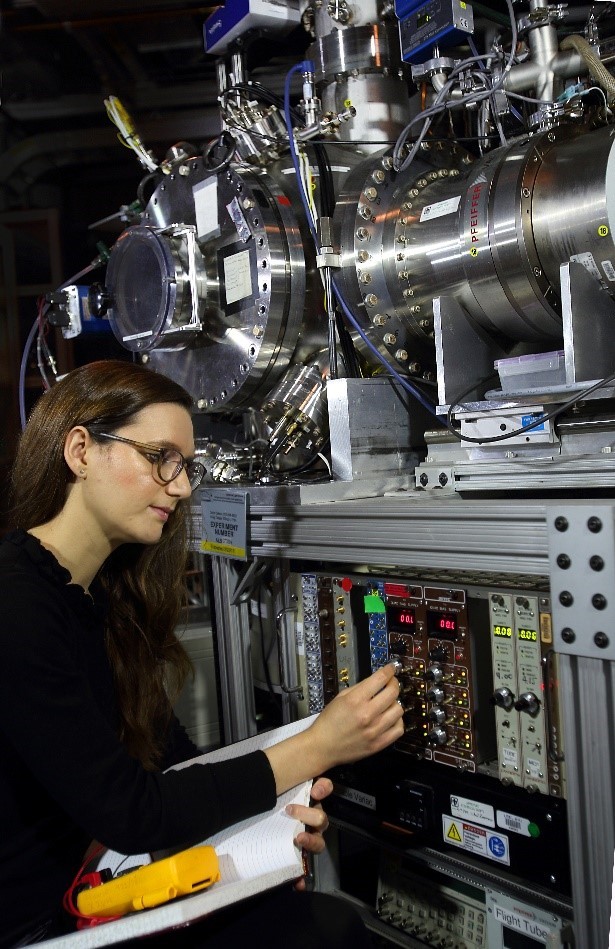Complex chemical reaction networks like those that occur in combustion and in atmospheric chemistry can contain thousands of interlocked chemical transformations. Frequently, important aspects of the overall chemistry depend on a few key reactions, for example, the chain-branching reactions that increase the number of reactive free radicals and drive hydrocarbon oxidation toward autoignition. The reactions in the networks are interrelated—the products of one reaction go on as the reactants in a subsequent chemical step—and often the critical reactions occur between species that are highly transient, reacting away almost as soon as they are formed. These species are sometimes referred to as intermediates and characterizing their reactions directly can be very challenging. At the CRF we work to understand the details of even complicated chemical systems, and so we have devised ways to synthesize these elusive molecules and measure their reactions.
The class of Creigee intermediates is important in tropospheric oxidation of hydrocarbons are carbonyl oxides. These molecules form in ozonolysis (the reaction of ozone with carbon-carbon double bonds)—a relatively slow reaction—and rapidly react away, making their direct detection in ozonolysis very difficult. CRF researchers discovered a way to form Criegee intermediates photolytically, allowing their reaction kinetics to be measured directly for the first time. Since this discovery, several research groups around the world have used this technique to produce and study reactions of these atmospheric chemistry intermediates. CRF researchers showed first that the reactions of Criegee intermediates with sulfur dioxide are fast enough to play a possible role in sulfate aerosol formation and, second, that their reactions with organic acids are fast enough to be a potential source of highly oxygenated molecules that are precursors to secondary organic aerosols in the troposphere. The first direct Criegee intermediate measurements used photoionization mass spectrometry. Subsequent work at the CRF also exploited developments in long-path absorption methods.



Key Contributions
- Photolytic synthesis of Criegee intermediates and rapid reaction with SO2
- Conformer dependence of Criegee intermediate reactivity
- Conformer-dependent ultraviolet spectra
- Products of CH2OO Criegee intermediate reaction with water dimer
- Unimolecular reaction of CH2OO
- Formation of highly oxygenated molecules from Criegee intermediate reactions in ozonolysis
- Kinetics of conjugated Criegee intermediates derived from isoprene
Partners
- Carl Percival, Jet Propulsion Laboratory
- Andrew Orr-Ewing, Anwar Khan, and Dudley Shallcross, Bristol University
- Rebecca Caravan and Stephen Klippenstein, Argonne National Laboratory
- Marsha Lester, University of Pennsylvania
- Daniel Stone, Leeds University
- Yiguang Ju, Princeton University
PIs: Nils Hansen, David L. Osborn, Leonid Sheps, Craig A. Taatjes